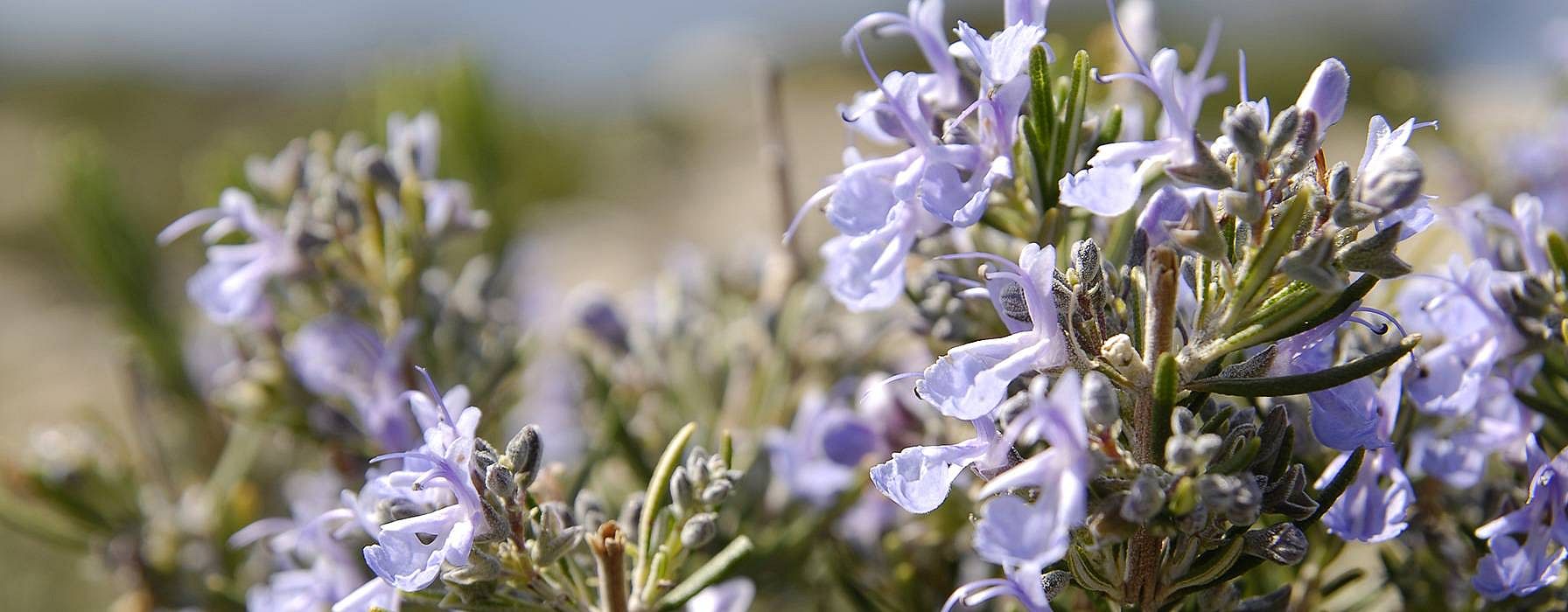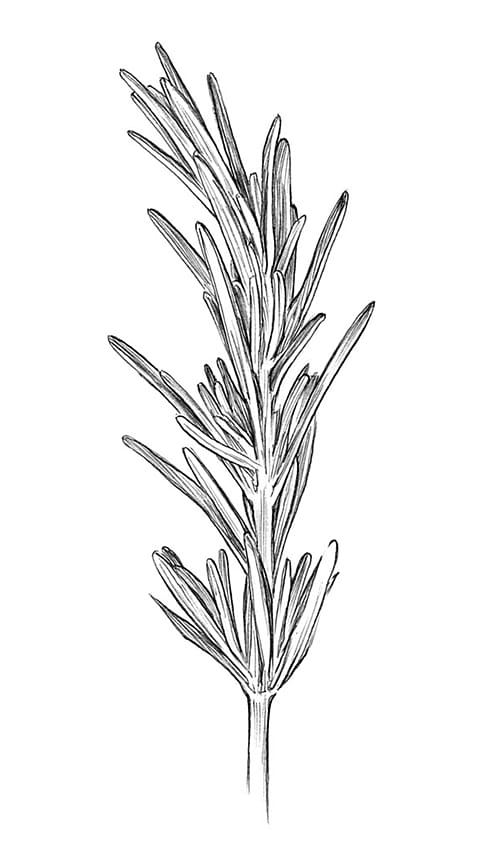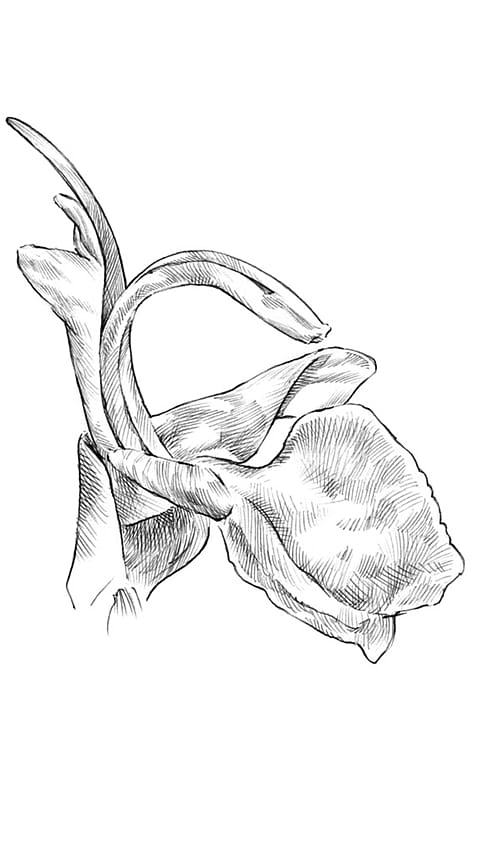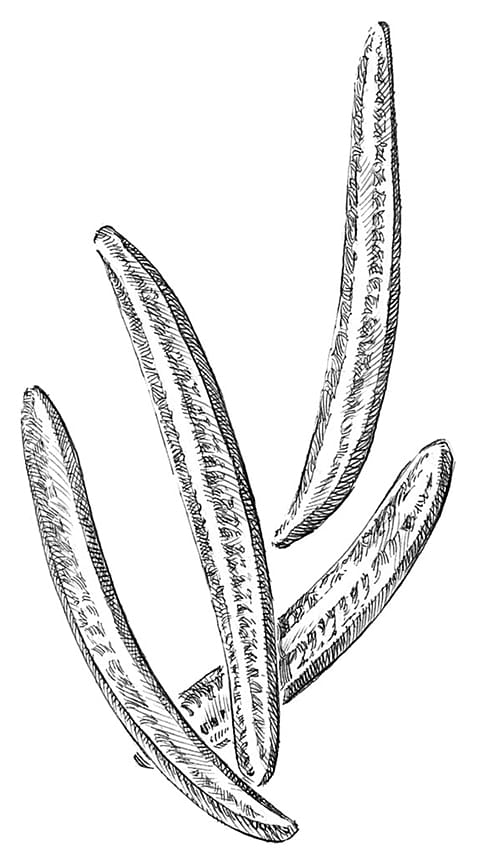Botanical Profile: Rosemary
Rosemary is known for its warming properties. The plant often thrives in extreme climatic conditions where it is exposed to light and heat. Its name derives from the Latin “ros marinus” and means “dew of the sea”.
Distribution
Rosemary (Rosmarinus officinalis) is native to the Mediterranean region and belongs to the Lamiaceae (mint) family, which has a special relationship which is known for its warming properties. The bushy, branched evergreen shrub can grow up to two meters high. Rosemary often thrives in extreme climatic conditions where it is exposed to light and heat. It can be found growing under the sun in dry scrub and rocky cliffs, often by the sea. Its name derives from the Latin “ros marinus” and means “dew of the sea”, indicating its natural habitat along the Mediterranean coast and the dew that gathers in its flowers at night.
Leaves and stems
The angular, woody stems are densely covered in narrow, needle-shaped leaves. Curving downwards, the leaves are shiny green on top and covered in fine hairs underneath.
Flowers
Rosemary flowers can be light blue, pale violet, white or pinkish in colour. The flowers appear in groups of two or more at the upper ends of the plant. Their shape, resembling the upper and lower lip of a mouth, is typical of the other plants in the mint family, also called Labiatae, meaning “having lips”. The flowers have long protruding stamens.
Use
Rosemary is often cultivated as an herb for culinary use. It is also known for its fragrant essential oil, which is considered to be energising and invigorating, stimulating the senses and blood circulation with an overall toning effect. Preparations with essential rosemary oil are used externally, for example as an oily rub or bath. Rosemary oil is also used as an ingredient in body oils, ointments and skin creams.








